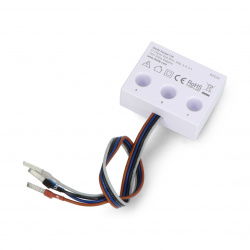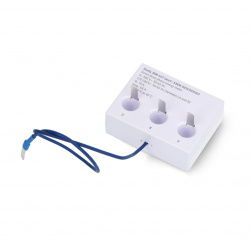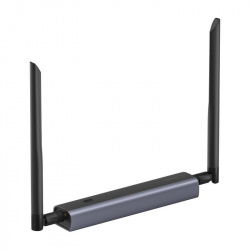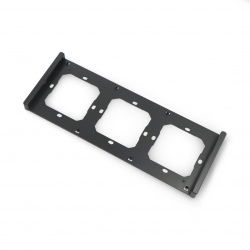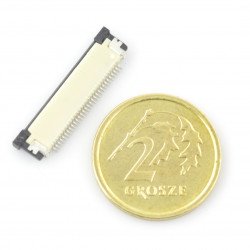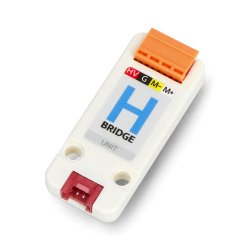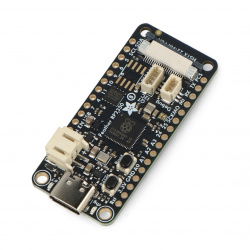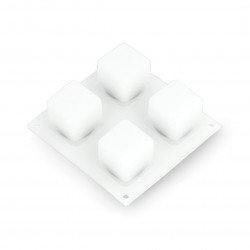Not everyone is aware of where the first wireless internet network began. The scientists from the University of Hawaii are responsible for its existence today not only in the world of advanced technology, but also in everyday life. The first network was called ALOHNET. Today it is hard to imagine that we could function without it. This applies not only to the area of entertainment, but also to science and work. We use WiFi for practically every activity that we do with mobile devices. It also works well with the Raspberry Pi microcomputer. The built-in WiFi module is available in Raspberry Zero W, A+, B and B+ versions, which are on the market since 2016. However, this does not mean that in older versions we cannot connect Raspberry Pi to the wireless network. We can do this using special external adapters, such as WiFi network cards. They are also used in devices equipped with a module, but with increased data transfer. A big advantage of network cards is the lack of necessity to install additional drivers.
RPi Wi-Fi cards
See also
- 24v relays
- Anet 3D printers
- Wireless mice
- Esperanza compressed air
- Outdoor LED lighting
- Fluorescent filament
- DJI Phantom drones
- Syma drones
- 2-core cables
- Power supplies 12v 10a
- DJI Mavic drones
- Conductive paint
- Zortrax Filaments
- DJI Inspire drones
- PLA Pro filaments
- Encoders
- Intel modules & kits
- Hexbug toys
- Magnetic balls
- DJI Mavic drones - drones and accessories
- Compressed air to clean the keyboard
- Tablets
- Intel starter kits
- Android Box Smart TV
- 2D printers and pens
- Banana Pi
- Photo traps
- GPS trackers
- Intel expansions & hats
- Resistors SMD 1206
- Aqara - home automation
- Smart ABS filaments
- Headphones
- Vacuum forming
- STM32 books
- Books about Raspberry Pi
- Chargers
- Dobot 3D printers
- String bags (zip bags)
- Intel - module accessories
- Refill filaments
- BeagleBone power supply
- Car handles
- Electrolytic capacitors SMD
- AGM batteries
- Alarm sirens
- Flsun 3D printers
- Tantalum capacitors SMD
- Sensors and alarms
- Motor capacitors
- RC cars and models
- Laminators
- Zortrax 3D printers
- Doorbells and peepholes
- Arylic sound modules
- Flexible filaments
- Khadas VIM
- Trilab 3D printers
- Bluetooth Speakers
- Goofoo 3D printers
- PowerBank mobile batteries
- Control equipment
- Linear actuators
- LED lighting
- Spare parts
- Webcams
- Urbicum 3D printers
- Raspberry Pi 2B+
- ATMAT 3D printers
- Mycusini 3D printers
- TinkerGen
- Weight meters
- Makeblock 3D printers
- DJI educational robots
- Silk Filaments
- Transport cases
- Orange Pi
- MakerPi 3D printers
- Sparky
- Abilix Krypton
- 3D printer Artillery
- Air conditioning and heating
- Air purifiers
- SkriWare - educational robots
- Gas soldering irons
- Exta Free - sensors and modules
- LittleBits
- Spresense Sony
- Netronix RFID modules
- Rock Pi
- AST lighting drivers
- CubieBoard
- WowWee
- Coolseer home automation
- AMK - automation and control
- Smartwatches
WiFi usage - more possibilities for work and entertainment
Nowadays it is very often used in computer networks. WiFi is a technology that allows the user to connect to the Internet wirelessly. WiFi is used from desktop computers as well as in mobile devices, i.e. smartphones, tablets and laptops. It is a very convenient solution, so there is no need to create connections using wires. The access point is a network card, amongst others. We connect it to the computer using a USB connector. This solution enables the transfer of data over a distance of up to 100 meters. How effective the transfer will be depends to a significant extent on environmental conditions.
WiFi network can be found in buildings and public places, such as offices, schools, restaurants or shopping malls, but also in private commercial premises, i.e. houses and flats. What is important is that it is used in the Internet Things, or IoT. Due to WiFi network it is possible to control any physical processes at a distance. It is perfect for lighting and entrance gate automation, as well as in industrial buildings, where particular production processes are automated in order to speed up work. Therefore, WiFi network is used both for entertainment and everyday work, as well as in the constantly developing technology, which facilitates and improves our daily functioning in a common and private environment.
WiFi network cards for Raspberry Pi. What do we recommend?
Our shop offers network cards, compatible with Raspberry Pi. They can also be used with other equipment, so they are multi-purpose and versatile. They meet IEEE 802.11b/g/n standard and their transmission speed is 150Mbps or 300Mbps, depending on the chosen model. Thanks to such a high speed it is possible to achieve high efficiency of multimedia devices, which are used, for example, for online games, telephone calls over the Internet or real-time video transmission. Moreover, the WiFi network cards we offer for Raspberry Pi do not require installation of any additional software. They are compatible with the Raspbian operating system. The cards provide a fast and stable wireless Internet connection. Thus, the possibilities of Raspberry Pi are definitely expanding. You can use your Raspberry Pi to create an extensive home multimedia centre or design a system to manage intelligent lighting.
If you have older Raspberry models than those manufactured after 2015, use an external adapter that will allow you to take advantage of wireless Internet. We offer a wide range of network cards with two speeds to choose from, depending on your needs and the purpose of Raspberry Pi. Take advantage of the potential of advanced technology.































































































































































































































































































































